In an era where information is more abundant than ever, the challenge isn’t just in accessing data, but also in organizing and leveraging it effectively.
Knowledge base architecture provides a powerful framework for transforming scattered information into unified, actionable insights for all businesses.
Just as a well-structured library helps readers quickly find the right book, a thoughtfully designed knowledge base enables organizations to harness their collective intelligence efficiently.
However, building an effective knowledge base software requires a strong architectural foundation to ensure seamless navigation, efficient search, and a positive user experience.
In this blog, we will explore the fundamental principles of knowledge base architecture, and why it is important to frame, store, and make knowledge easy for users to access.
What is knowledge base architecture?
Knowledge base architecture refers to the structure or framework used by businesses to organize, store, and retrieve information efficiently.
It establishes design rules, data models, and technologies to create intelligent, searchable, and scalable knowledge management systems.
The primary goal is to ensure easy and quick access to information across various knowledge repository systems or applications for self-service purposes.
Key elements of knowledge base information architecture
Whether you are a professional knowledge base architect, a content lead or a support agent, it’s essential to adopt certain principles that can streamline and enhance your knowledge management process. Here are some features you can oversee in your knowledge base architecture.
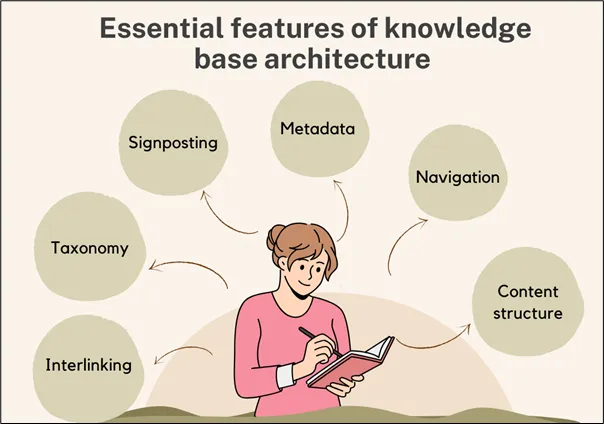
- Interlinking: Connects related articles within the knowledge base, allowing users to navigate seamlessly between topics.
- Taxonomy and categorization: Organizes information into a hierarchical structure (sections, categories, subcategories, labelling, and tags) making it easier for users to locate relevant information.
- Signposting: Uses headlines and names to inform users about their current location or where they are at that particular time.
- Metadata: Adds descriptive information (keywords, author, date, and related articles). Utilizing metadata enables users to filter search results and find the most relevant articles quickly.
- Navigation: Ensures users can easily browse and access different sections of the knowledge base. Includes intuitive menus and search functionalities that help guide users to move through content without confusion.
- Content structure: This is the way information is organized, formatted, and presented within a knowledge base. (Formatting, style, subheadings, bullet points, and tone) across articles.
Effective steps to improving knowledge base architecture
Creating robust and effective knowledge base ensures that content is not only accessible to users but also remains useful in addressing their requirements. Here are the best practices to create an effective knowledge base architecture:
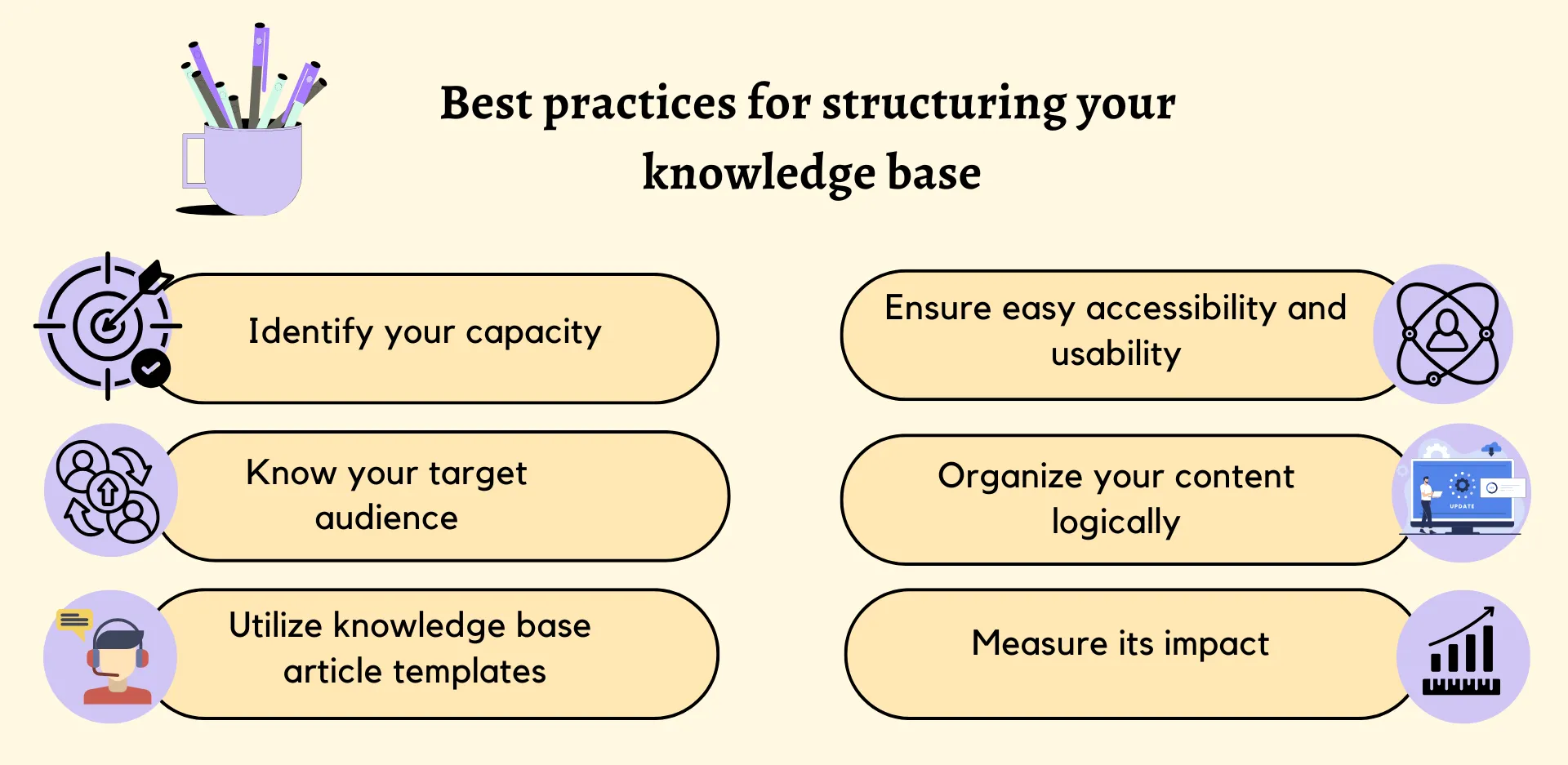
Identify the capacity of your knowledge base structure
Before you start creating or improving your knowledge base information architecture, take time to accurately assess your current capabilities, resources, and constraints.
- If you have an existing documentation, consider reviewing it first, to measure their relevance and quality.
- Identify team members who can help structure the knowledge base, including designers, UX experts, and article writers, to evaluate the best content creation tools available.
- Do you know how long it might take you to complete the knowledge base architecture? Be mindful of time limitations, ensuring a sustainable commitment rather than overextending on building it and risking failure.
By understanding these factors, businesses can create an efficient, user-friendly, and adaptable knowledge base over time.
Know your target audience
Understand your target audience by analyzing user personas, gathering feedback from support interactions, and tracking search queries to identify common pain points.
Structure content based on technical proficiency and frequently asked questions to ensure seamless navigation and reduce ticket volume.
Consider what type of structure and knowledge base information architecture your audience prefers.
According to a report, 81% of customers attempt to resolve issues before reaching out for support.
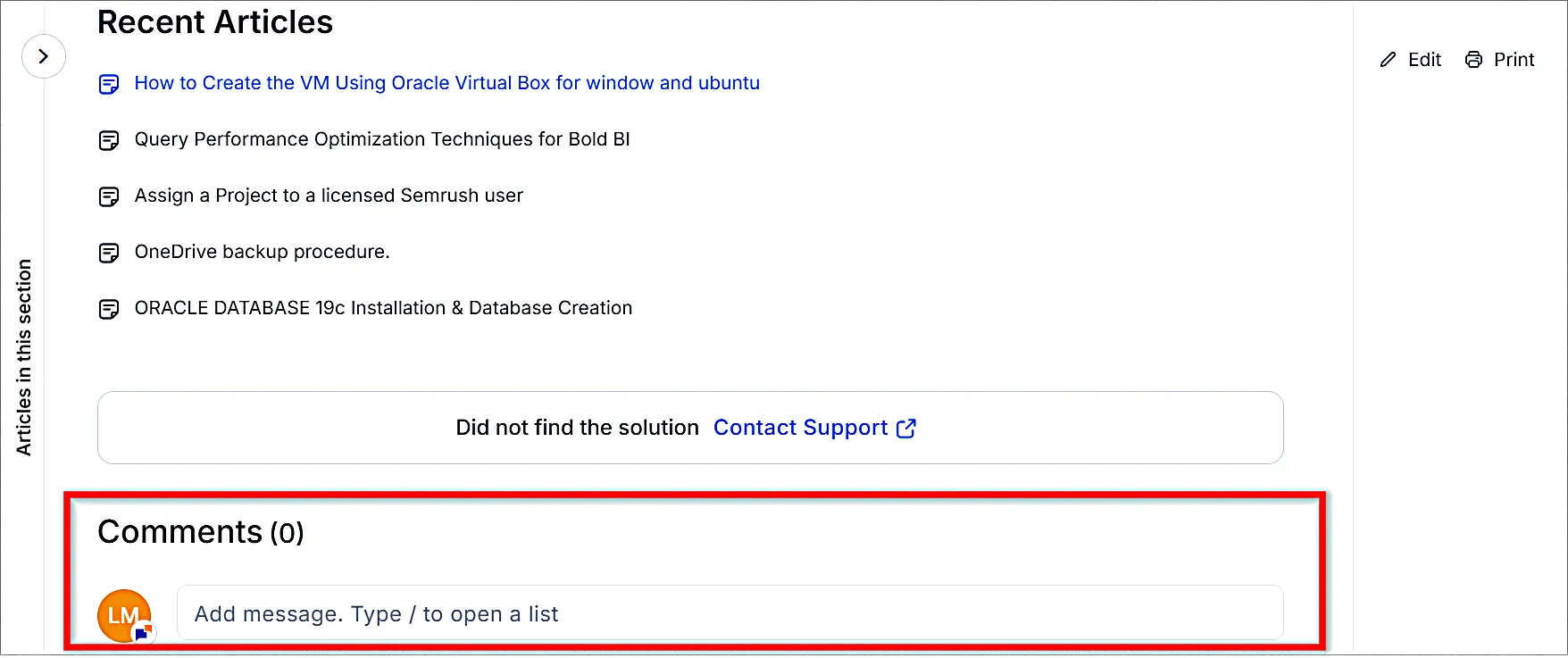
A well-crafted knowledge base is more than just a collection of articles it’s a powerful tool for customer engagement and support.
Align it with your audience’s needs and expectations to make it truly effective.
Your buyer personas aren’t just for marketing they should also shape your knowledge architecture since the information is meant for their use.
Utilizing customer information will help shape content effectively, just as they did when identifying key topics.
Utilize knowledge base article templates
A knowledge base should not only store information; it must provide clear, organized content that assists users in solving problems efficiently.
To achieve this, it’s important to recognize that not all articles serve the same purpose.
Most knowledge bases include four main types of content.
- How-to guides: Offers step-by-step instructions for completing tasks
- Troubleshooting guides: Helps users diagnose and fix issues
- Reference articles: Explains features and options
- Best practices: Provides recommendations for maximizing product use
- FAQs: Includes answers to common queries or solutions to simple issues
Additional categories may be necessary for your product, but too many can create confusion and weaken the structure.
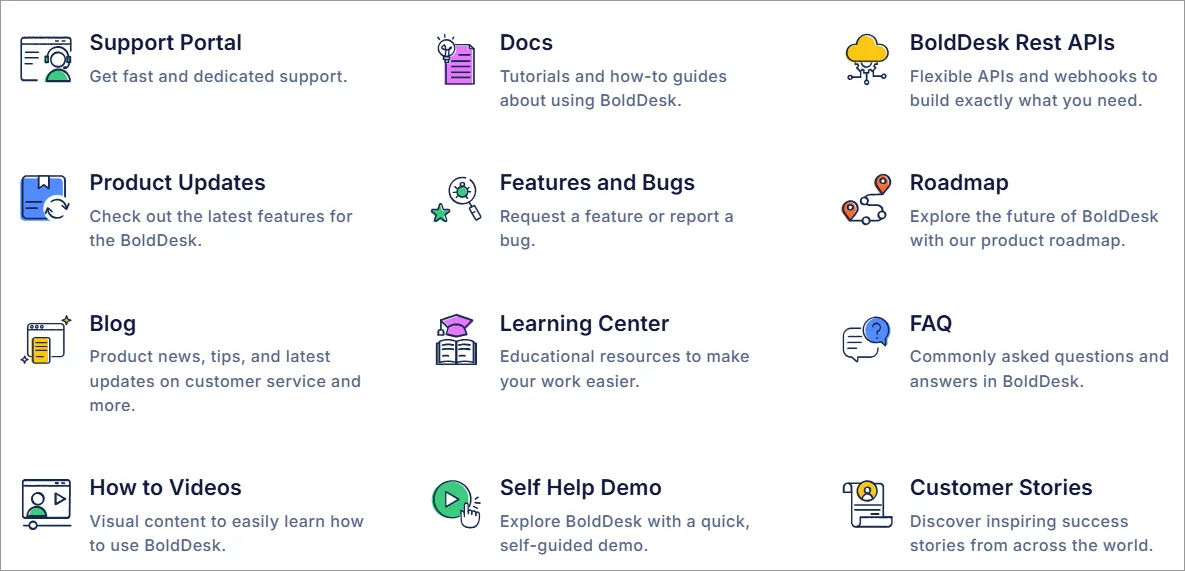
Focus on these defined article types to maintain clarity and consistency. If a topic doesn’t fit within them, consider placing it elsewhere.
Each article type should also follow a structured format, making content easier to navigate and understand.
Creating knowledge base article templates for common types of self-help resources can also help streamline content creation and ensure uniformity.
Ensure easy accessibility and usability of important content
How fast can customers get urgent information on your website or help center? Visibility of such important content within your knowledge base architecture matters.
Customers often get frustrated and waste time when experiencing slow search engines making it difficult to find solutions. To avoid this, ensure the structure of your knowledge base redesign highlights articles that address the most common issues first.
Consider using a simple content hierarchy and attractive design to highlight key content, ensuring customers quickly find the answers they need, keeping them engaged and satisfied.
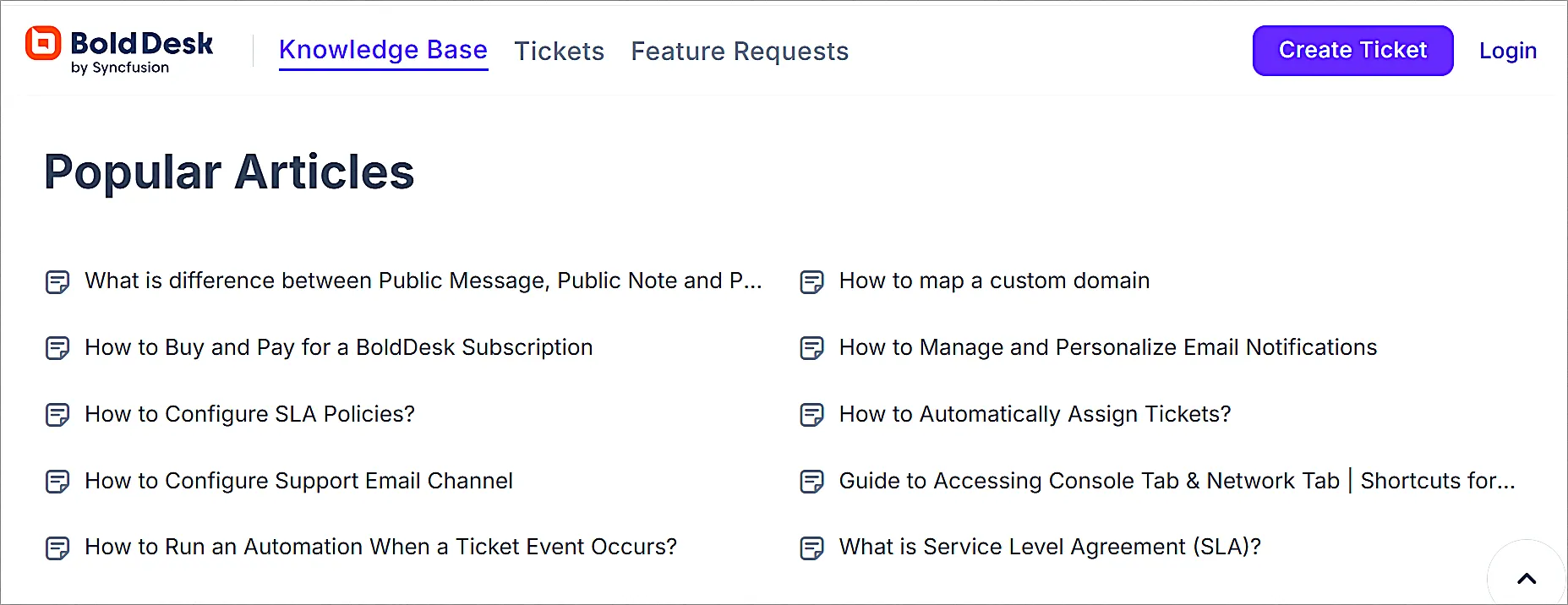
Ensure the interface aligns with the organization’s branding and prioritize accessibility to enable users to easily find and access the information they need.
Organize your content logically
Normally users seek a dynamic and fast interface that enables them to easily find assistance and resolve their issues quickly.
Identify common search topics, categorize articles, and provide clear instructions with self-service tools and interactive features.
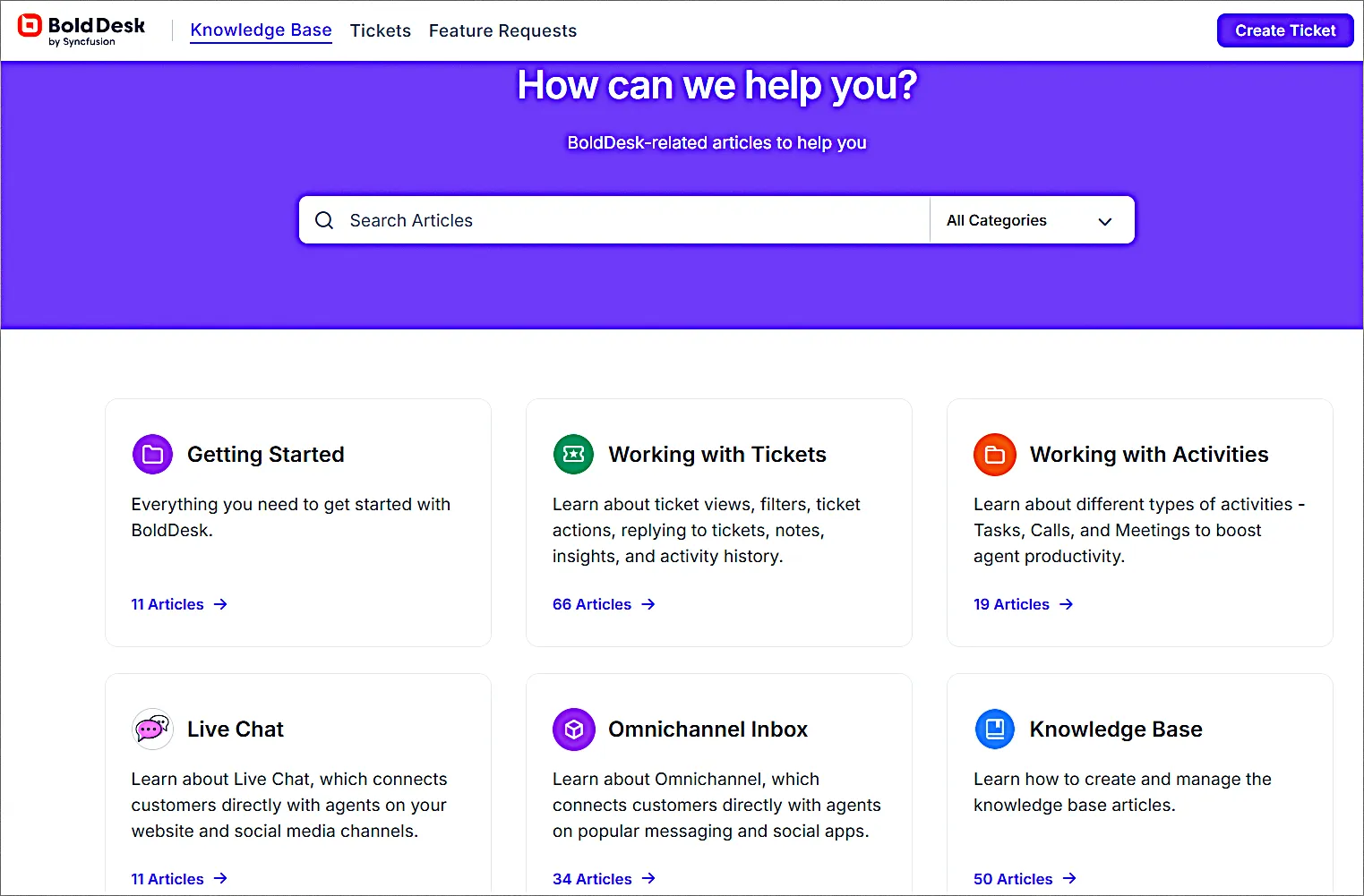
You can also utilize FAQs, step-by-step guides, and relevant help articles to direct users to the right information they are looking for to enhance understanding.
Ensure a consistent use of headings, font styles, and size for better readability. Spot and address content gaps and redundancies that require updates or removal.
Implement straightforward search and filtering options to empower users and help them improve on their problem-solving capabilities.
Measure the impact of the knowledge base structure and improve performance
Once you have implemented your knowledge base architecture, evaluate its effectiveness in meeting user needs and achieving desired outcomes.
Does it serve your knowledge base goals such as improved efficiency of overall support or self-service rates?
Try to analyze your key knowledge base metrics like search success rates, article views, and customer feedback to reveal how users interact with the knowledge base and where they encounter difficulties.
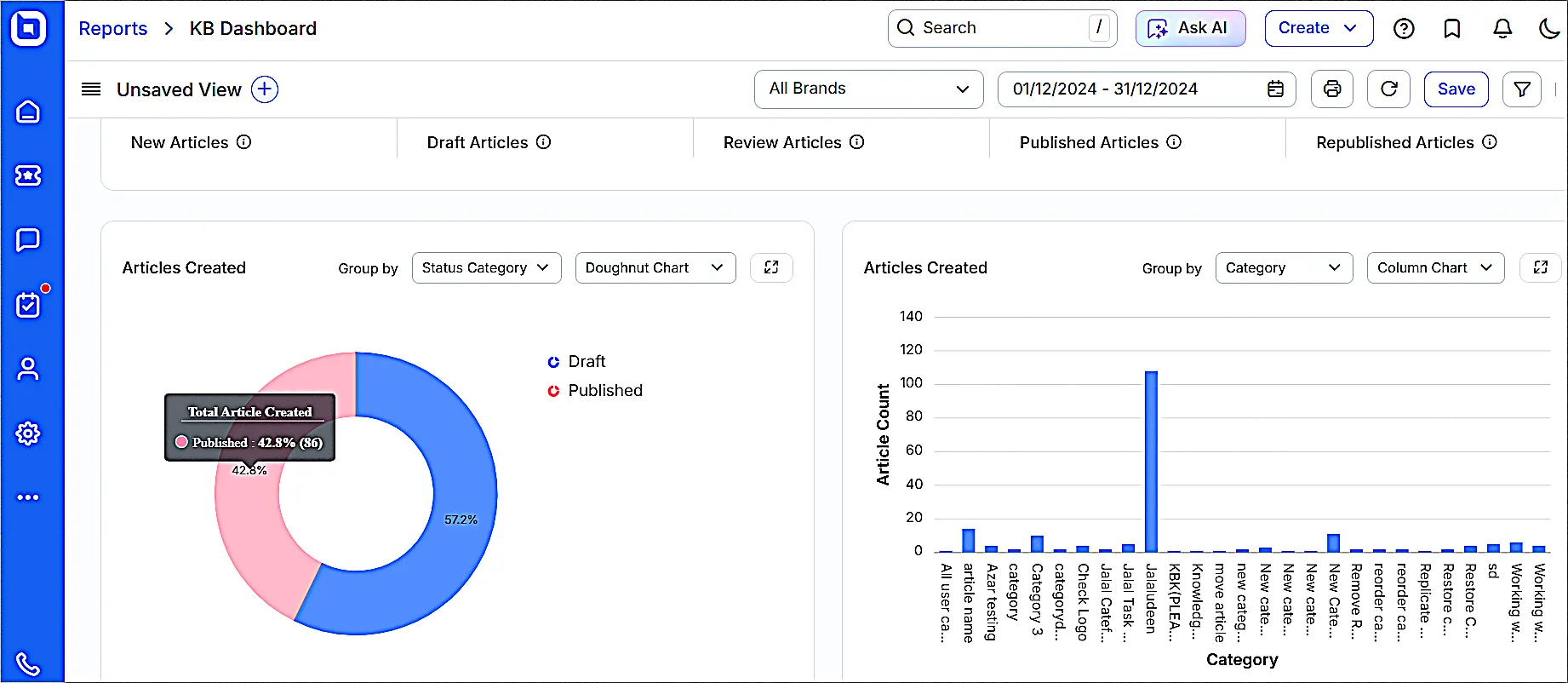
Maintain accurate, up-to-date, and relevant information by regularly reviewing and updating outdated or irrelevant structures based on customer feedback.
Importance of effective knowledge base structure
When you create a knowledge base, it helps both your support teams and customers find answers quickly.
Investing time and effort into your knowledge base design is worthwhile when the expected benefits outweigh the initial work needed. Here are some common reasons to think about structuring your knowledge base:
- Ensures consistency: A good knowledge management architecture ensures information is consistent across the organization. This helps to avoid confusion and misunderstandings among team members when answering customer issues.
- Scalability: As your organization grows, so does the amount of knowledge that needs to be managed. A well-designed knowledge base system architecture grows with your organization, efficiently managing increasing volumes of information without compromising performance.
- Enhances searchability: Knowledge base architecture allows information to be searched and retrieved quickly and easily. This helps users save time on research and facilitates faster problem-solving within the organization.
- Promotes innovation: By having an organized knowledge base information architecture, organizations can easily identify gaps in information and areas for improvement. This fosters a culture of innovation and continuous learning within the organization.
Equip users with a strong and effective knowledge base architecture
An Ideal knowledge base information architecture serves as a foundation for you to build upon. You can add specific examples, case studies, and implementation tools to build and improve your knowledge base.
Take the necessary steps, with practical insights, to improve the effectiveness of a knowledge base architecture.
Schedule a live demo to discover how BoldDesk® can help you design a strong knowledge base architecture that allows your target audience to easily access information whenever they need it.
Start a free trial to explore its numerous knowledge base features. If you have any questions, please contact the support team at BoldDesk.
I hope this article was helpful! Let me know if you have any further questions in the comment section below.
Related articles


















 Email Ticketing System
Email Ticketing System Shared Inbox Software
Shared Inbox Software Multi Brand Help Desk
Multi Brand Help Desk Internal Help Desk Software
Internal Help Desk Software Trouble Ticketing Software
Trouble Ticketing Software Mobile Help Desk
Mobile Help Desk 


















